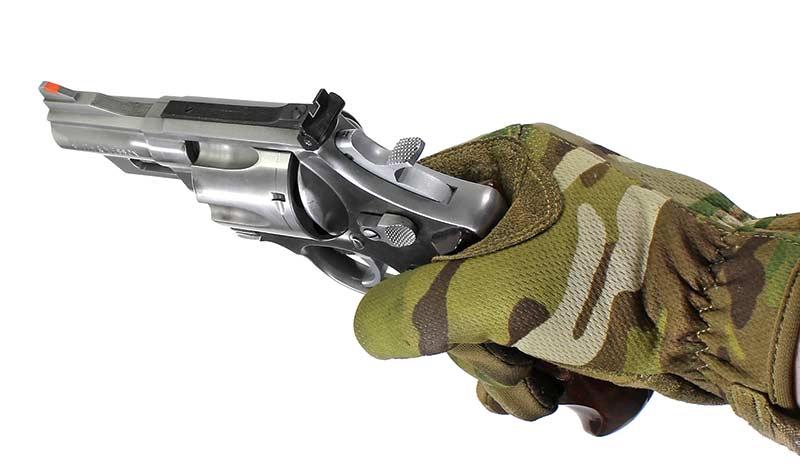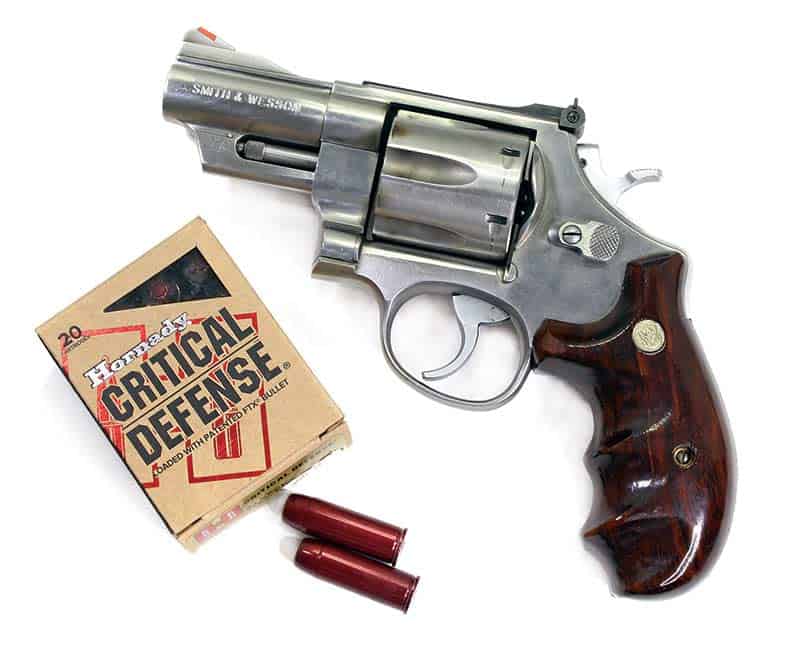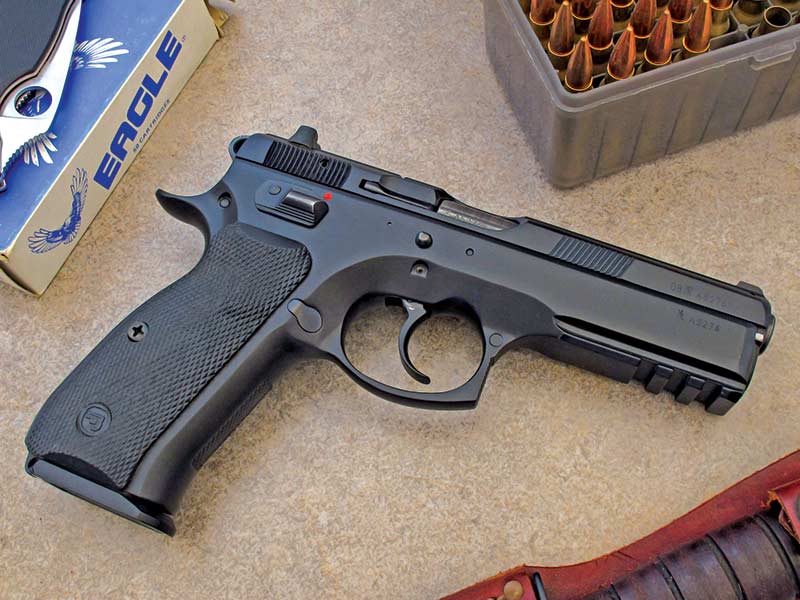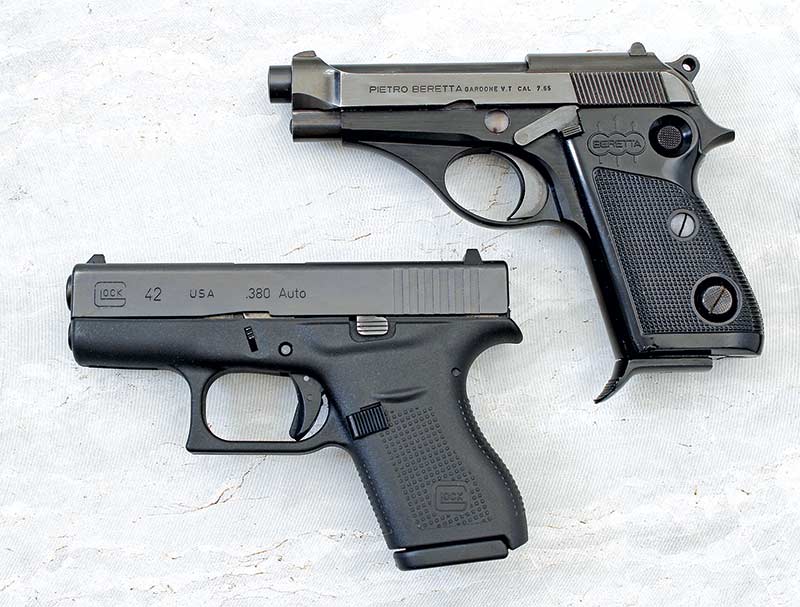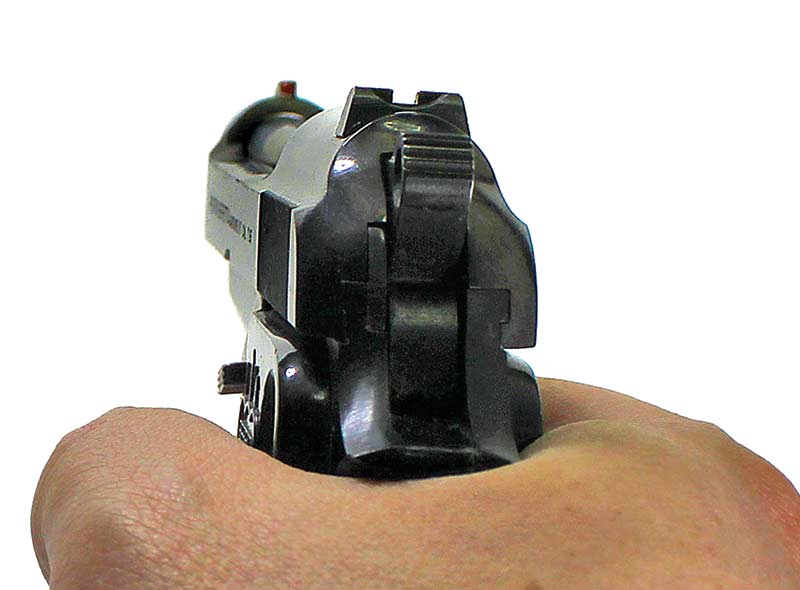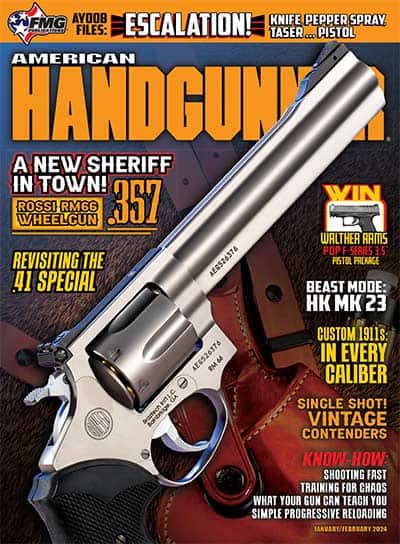Your Gun Speaks…
What Can It Teach You?
I’m going to guess you’ve been in a similar situation to what I’m about to describe. First, you see a new gun — perhaps in our pages here, maybe in a consignment counter of a local shop. You initially tell yourself you don’t need it, but then you crack and find yourself reading reviews and browsing pictures on the internet. Willpower fully sapped, you head to the store and empty your wallet. You give it a good function check, racking slides or cocking hammers, and your head spins with just how cool this thing is going to be once you get to the range.
The days move slowly as you deal with the usual commitments and drudgery. The kids need to get dropped off or picked up from somewhere, projects need to be completed for work, dinner needs to be put on the table, and there’s no end of household chores that need to be put to bed. But at long last, you find yourself the beneficiary of unallocated time. Guns and ammo are collected, the jalopy is gassed up, and you make the trip to the range. Eye and ear protection is donned, your new acquisition is raised to the target, and your index finger begins to take up pressure on the trigger.
One minute later, you’re staring at a mediocre group. Maybe you’ve missed your target entirely. And just like that, it seems you’ve fallen entirely out of love.
On one hand, life is short, and if you sold off every firearm that didn’t bring you constant, unmitigated joy and 100% effortless shooting, I wouldn’t fault you! However, there have been more than a few pieces in my personal collection that I might not have appreciated fully the first time I shot them but have since taught me something and made me a better shooter in general.
In fact, I’d argue more people fall out of love with all of the handguns I’m about to mention than any other — they can make a very poor first impression. However, I’ve since learned to love them, and I’d be a far worse shot if I impulsively kicked a lot of these purchases to the curb.
The Magnum
Most men feel like they can drive fast, cook, make love and shoot magnum handguns without ever feeling like they need to put in the work to actually become proficient. Lots of people saw Dirty Harry back in the day and pined for what was then “the most powerful handgun on earth.” After about a few cylinders of big bore, full-power .44 Magnum out of S&W’s Model 29, no shortage of owners turned 180 degrees and marched that sixgun right back to the gun store — along with a half-full box of ammo.
I’m of the distinct opinion that shooting the magnum handgun requires more than just holding it in the general direction of one’s target, pulling the trigger and hanging along for the ride. I think you also need to hit what you aim at. Unfortunately, recoil has long been a detriment to realizing good accuracy, and our reptile brains are hard-wired through millions of years of evolution to freak out (if only a little bit) when we hear a gigantic boom.
Often, the fight-or-flight reflex that accompanies the first round of magnum handgunning produces an adrenaline dump that makes fine motor manipulations more challenging. Slow, careful trigger presses often turn into exaggerated mashes, particularly among novice and intermediate handgun shooters.
However, the magnum handgun is undoubtedly “expert mode” when it comes to teaching careful and deliberate trigger manipulations and learning to fight one’s way back through stress and adrenaline is immensely valuable. I’ve found the real-deal magnum handgun to be excellent when it comes to magnifying any bad habits one has in terms of recoil anticipation and providing an immediate opportunity to correct them.
Additionally, after one gets some trigger time on a .44 Magnum (or bigger!), it’s funny how the recoil of just about any other self-defense cartridge ceases to be a big deal. Once you know how a gun can bite, twist, or buck under heavy recoil, you become that much more appreciative of anything that makes a well-mannered pop and settles back down in the hand.
The “Traditional” DA
About 10 years ago, a lot of the common dogma on the internet seemed to favor striker-fired autos. There was a distinctively sour note when it came to those asking about the viability of the Beretta 92, S&W “Third Gen” autos, or even H&K’s USP series. “It doesn’t make sense to try to master two trigger pulls,” opined the self-appointed experts. “Just pick a platform where you only have to get good with one.”
A few people I knew competing in IDPA bought into that methodology fully — even problematically. If they did have to compete with a DA/SA auto, they saw the first shot almost as a throw-away. “Might as well just mash the trigger and get that first round over with,” said one shooter. It was a perspective that could, in some cases, work out okay in matches with lots of close targets, though I hope we all recognize how this could create a liability if one adopted the same philosophy with a CCW piece. As I heard it first from Clint Smith, “Every bullet has a lawyer behind it.”
In reality, it might surprise a few people to hear I’ve had fun mastering two separate trigger pulls. In most cases, the DA pulls of most autos are heavier in comparison to revolver triggers, a platform I was once far more familiar with. I couldn’t really “stage” a DA auto trigger. Instead, I had to learn better techniques to get the trigger moving and continue through the motion fluidly until the shot finally broke. Even a mediocre DA auto trigger often behaves fairly predictably: Don’t start and stop. Make a commitment to the pull and execute consistent, increasing pressure until the resistance seems to drop off the proverbial table.
Surprise, surprise: I now often shoot DA/SA autos better in the DA mode simply because of that surprise break. I also very much like the peace of mind that comes with employing these guns for CCW or home defense with the chamber loaded and the hammer down, ensuring that the first round can only be fired with care and deliberation. My DA familiarity has also made me a much better revolver shooter, to boot!
The Mouse Gun
Perhaps no handguns produce more of a palpable difference between expectation and reality than itty-bitty guns. They look cute and unassuming — something, maybe, your wife, daughter, or grandma could handle and instantly start shooting like Annie Oakley, right? At the very least, shouldn’t a big, strapping man be able to wrangle something so Lilliputian with total ease?
The fantasy typically dies after a few presses of the trigger. Often, the mouse gun’s drawback is similar to that of the magnum handgun: They’re typically not easy to shoot due to aggressive, snappy recoil. Sure, the guns are small, but they’re often chambered for defense-capable rounds like .380 ACP and .38 Special. Some can be downright painful under recoil.
However, even if they’re comfortable to shoot, design constraints present their own challenges. They’re hard to grip, making them susceptible to point-of-aim variations due to grip inconsistency. They don’t have a lot of mass, so it’s easier to push the muzzle to and fro in the event of a mash. A majority of designs depend on tiny, hellaciously stiff springs to power slides, hammers and other working parts — as a result, their triggers tend to suck.
Getting good at shooting a mouse gun means adapting to a platform that is flat-out working against you. It requires more on all fronts: more attention to the light on both sides of the front post in the rear notch. More consciousness of pulling the trigger straight back, even through greater resistance. More mindfulness of how the dominant hand interfaces with the tiny grips and if one’s “natural” point of aim is actually pointing the firearm where you want it to.
But work through those idiosyncrasies and I guarantee you’ll feel like you’ll have well and truly earned your hits. The mouse gun accepts absolutely nothing less than excellence, and as a result, it can be a superb coach for a shooter who wants to push their abilities and get to know how solid (or shaky) their fundamentals truly are. “Not good enough,” the mouse gun often says. “Run it again.”
Hard Fun?
I have many handguns in my collection that feel like an extension of my arm that seem to put bullets exactly where I want them. Many guns didn’t require any kind of warm-up, break-in period, getting to know their quirks, or whatever else: I just aimed them at the target, and they seemed to do my bidding! At the end of the day, I have to admit I like hitting more than missing.
However, there’s been a good 30% of my collection that I’ve had to come around on. Most fit one of the above three categories. Over a decades-long, getting-to-know-you period, they’ve shown me that as far as handgun accuracy goes, and in the overwhelming majority of contexts, “It’s the Indian, not the arrow.” I’m a better shot for not having ditched some guns that stymied me as a younger shooter, and today, I appreciate the extra level of challenge in having to work a little harder for a clean hit.
Again, some guns won’t meet you where you are. But before you angrily sell a seemingly non-compliant heater for less than you paid, ask yourself whether it can be a tool to get your skill set to where you want it to go. Its foibles might turn out to be features, after all.

